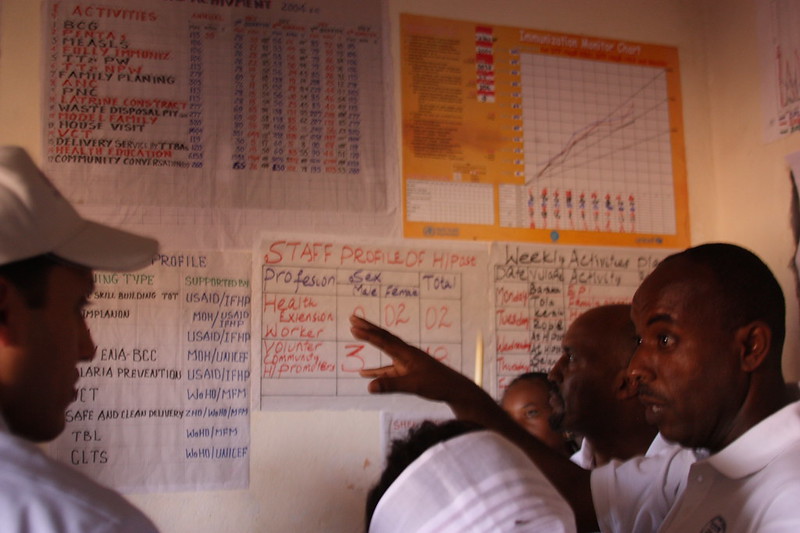Tobacco taxes are a highly effective instrument to reduce the consumption of tobacco, discourage new young smokers, raise government revenue, and help reduce the social and economic costs of tobacco products consumption, estimated at 8 million premature deaths per year and costing 1.8 percent of global output in health costs and productivity losses. The bulk of these losses occur in low- and middle-income countries, where more than 80 percent of the world’s smokers live. While other policies—including smoke-free air legislation, prominent health warning graphics on packaging, bans on tobacco company promotion and advertising, and public education campaigns—reduce tobacco’s health toll and economic impact, tobacco taxes are the single most effective instrument.
A new global scorecard by the Tobacconomics group at the University of Illinois Chicago assesses the effectiveness of over 170 countries’ cigarette tax policies and provides an important step towards global metrics for health taxes on tobacco, alcohol, and unhealthy foods. The scorecard provides policymakers with a tool to assess cigarette tax performance, identify areas for improvement, and benchmark performance against country peers. One clear conclusion is that considerable room to strengthen tobacco tax policy remains in the vast majority of countries worldwide and especially in low- and middle-income countries (Figure 1).
Figure 1. Cigarette Taxation Scorecard 2018
(5 represents the most effective tax regime)
How is the scorecard calculated?
Because data for other tobacco products is limited, the scorecard focuses on cigarette taxation. The four components of the scorecard are retail price, change in affordability over time, tax share of retail price, and tax structure (Figure 2). Scoring uses data collected by the World Health Organization on each of the components of tobacco taxation, which are assessed on a scale of 0 to 5 in relation to best practice defined by WHO and other organizations, including under the Framework Convention for Tobacco Control and the WHO Manual on Tobacco Tax Administration.
Figure 2. Components of the Cigarette Tax Scorecard
Main takeaways
The scorecard yields several important insights, including:
- Only four countries score more than 4 out of 5: Australia, New Zealand, Ecuador, and the United Kingdom. The scores reflect high and increasingly uniform taxes on cigarettes, which result in high cigarette prices.
- Forty-six countries score less than 1 out of 5, including Vietnam, Pakistan, Nigeria, and Ethiopia.
- In large emerging markets, which account for the bulk of global cigarette consumption, the picture is mixed (Table 1). The higher scores—in the Philippines and Ukraine—reflect robust tax structure, high tax share, and decreasing affordability. These countries are weaker on retail prices (a score of 1 means pack price is between $2 and $4 in international dollars/$PPP). The lower-scoring tax regimes—in Indonesia and Pakistan—have complex tax structures (e.g., tiered ad valorem taxes) and low retail prices, while cigarettes have not become less affordable in recent years.
Table 1. Tobacco Tax Scorecard for large emerging markets
Source: Tobacconomics Cigarette Tax Scorecard
- Performance is weakest on affordability, where 123 out of 186 countries saw no significant reduction in affordability or an increase in affordability over the past six years, resulting in a score of 0 out of 5. This flags the importance of regularly raising tobacco taxes, especially when disposable incomes are rising rapidly.
- Scores show limited improvement from 2014 to 2018. However, a few countries show significant improvement due to determined tax policy action: Bahrain, Saudi Arabia, and United Arab Emirates, from the introduction of significant excise taxes; and the Philippines and Kyrgyzstan, from tax simplification and large tax increases.
- Measuring tax administration and enforcement remains a challenge. The scorecard acknowledges that there is a lack of comprehensive and consistent data on tobacco tax administration. Nonetheless, the adoption of track and trace systems—as required for signatories of the Protocol to Eliminate Illicit Trade in Tobacco Products—could in time provide the needed source for information on verification, tracking, tracing, and authentication of tobacco production/importation and taxation to construct a tax enforcement component.
Towards a Health Tax Scorecard?
The Cigarette Tax Scorecard goes a long way to filling a gap in the metrics of tobacco control by complementing data on retail prices with measures of affordability, the tax share in price, and tax structure to give a more complete picture of the effectiveness of tobacco taxation in reducing tobacco consumption. The Scorecard metrics would strengthen the assessment of overall tobacco control policies as, for example, in the Tobacco Control Scale assessment of European countries.
The Cigarette Tax Scorecard could also be a step toward a Health Tax Scorecard that provides a broader assessment of the extent to which corrective taxes are levied on harmful products by adding in taxation of fuel, alcohol, and unhealthy foods such as sugar-sweetened beverages, based on similar principles of price, tax share, tax structure, and affordability. Much of the global data needed to produce a health tax scorecard is available, including for sugar-sweetened beverages taxation. With a stepped-up effort to monitor alcohol taxation—building on the World Health Organization’s existing Global Health Observatory Data Repository—a global health tax scorecard would be in reach.
Disclaimer
CGD blog posts reflect the views of the authors, drawing on prior research and experience in their areas of expertise. CGD is a nonpartisan, independent organization and does not take institutional positions.





